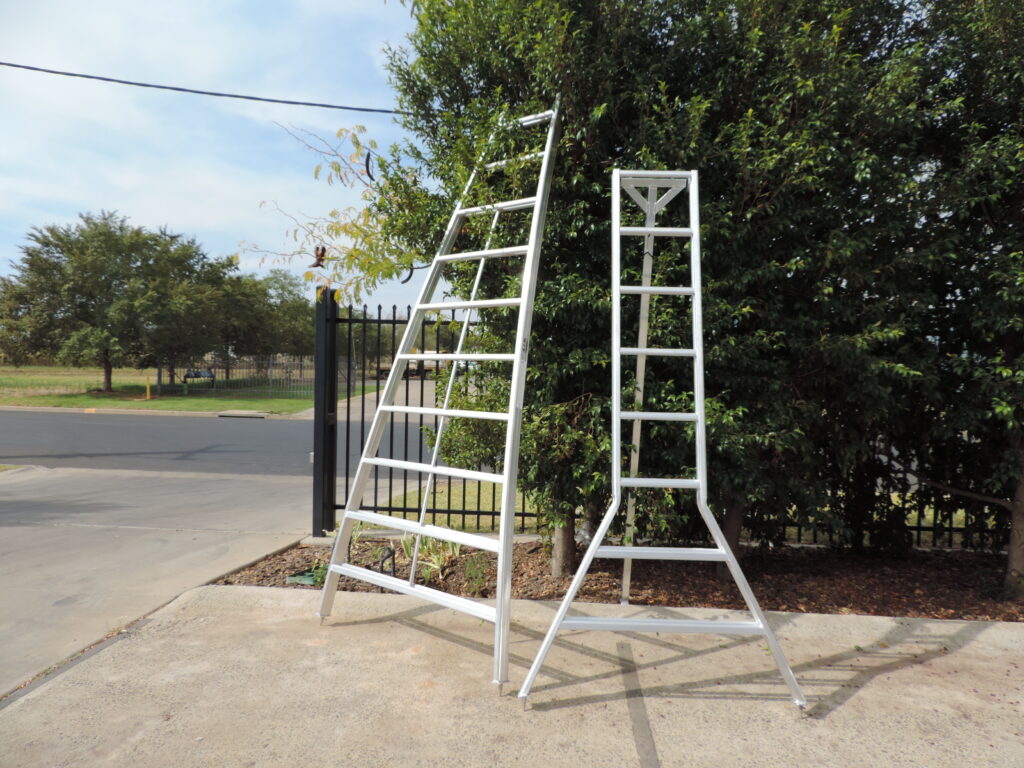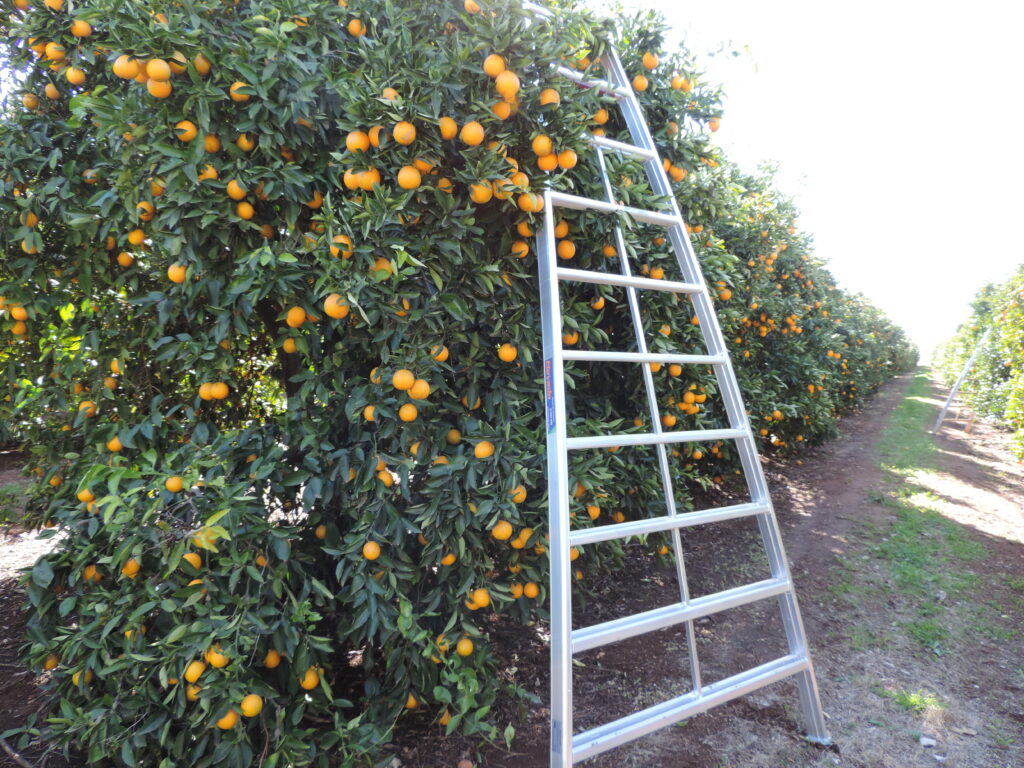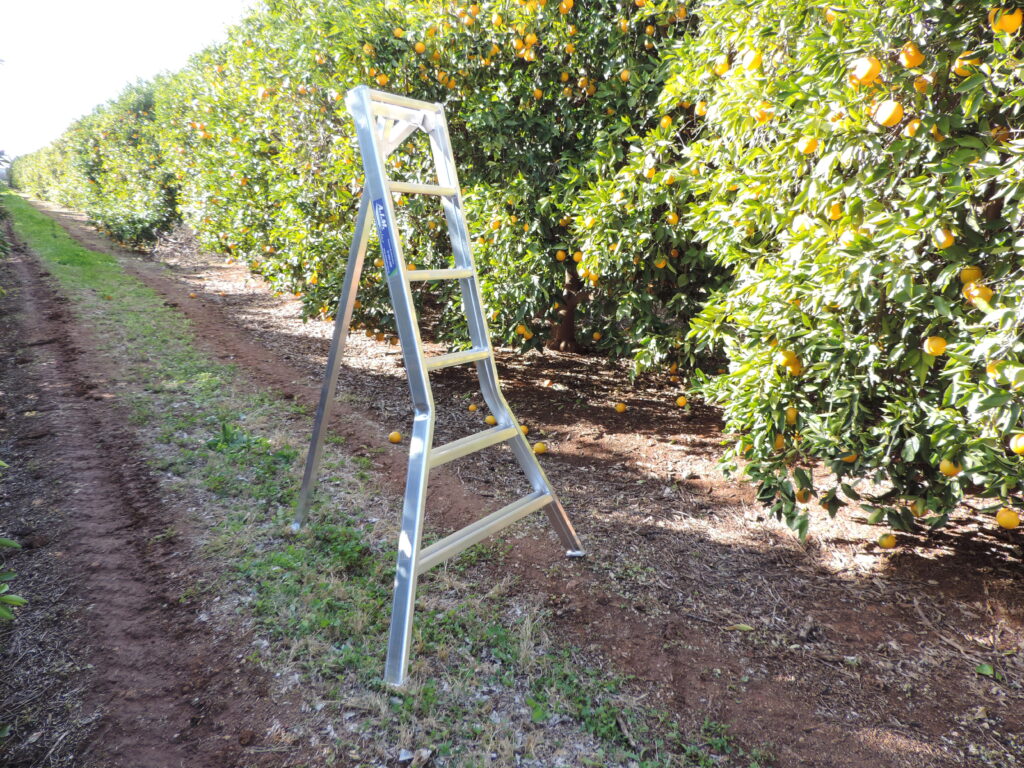Choosing the Right Orchard Ladder: A Guide for Australian Growers

Managing orchards efficiently requires the right tools, and orchard ladders are an essential part of the job. From fruit picking to pruning and general tree maintenance, having a safe, reliable ladder can make all the difference. In this guide, we’ll explore the different types of orchard ladders, important features to look for, safety tips, and where Australian growers can find the best options.
What Is an Orchard Ladder, and Why Is It Important?
An orchard ladder is a specialised ladder designed to help workers safely reach fruit in high branches, prune trees, and perform other orchard maintenance tasks. Compared to regular ladders, they offer better stability on uneven terrain, making them ideal for orchards and farms. A well-chosen orchard ladder improves efficiency and reduces strain on workers, ensuring smoother operations during fruit picking seasons.
Tripod Orchard Ladders
Design: Three-legged structure, with the third leg providing stability on uneven ground.
Advantages: Lightweight, stable on slopes, and easy to manoeuvre around trees.
Disadvantages: Not ideal for very heavy loads or large platforms.
Best Use: Perfect for fruit picking in orchards with uneven or sloping terrain.
Platform Ladders
Design: Wide platform at the top for added stability and comfort during tasks.
Advantages: Ideal for long tasks (e.g., pruning) since workers can stand comfortably on the platform.
Disadvantages: Heavier and less portable than tripod ladders.
Best Use: Suitable for pruning or maintenance tasks that require more time in one position.
Bow Ladders (Citrus Picking Ladders)
Design: Features a distinct curved shape that provides extra stability and support for working at height.
Advantages: Specifically designed for citrus picking, allowing easy reach of high branches without leaning directly on the tree.
Disadvantages: Not as versatile for other types of fruit picking, as it’s optimised for citrus orchards.
Best Use: Optimal for harvesting citrus fruits, particularly in orchards with denser foliage.

Key Considerations When Choosing an Orchard Ladder
When selecting the best orchard ladder for your needs, consider the following factors:
Safety Features
Look for anti-slip feet and stabilising designs to prevent falls and ensure the ladder can support the required weight capacity.
Material and Durability
Aluminium ladders are lightweight, weather-resistant, and long-lasting, making them ideal for Australian conditions.Timber ladders may be cheaper but can deteriorate faster in outdoor environments.
Portability and Ease of Use
For large orchards, a ladder that is easy to move around can save time and effort. Lightweight ladders are also easier to transport between different locations.
Adaptability to Terrain
Tripod ladders provide better stability on uneven surfaces, making them useful for hilly orchards. Consider ladders with adjustable legs if you often work on sloped ground.

Orchard Ladder Safety Tips
While orchard ladders are designed for safety, following these best practices will further minimise risks:
Position the ladder properly: Ensure all legs are firmly planted on stable ground before climbing.
Use the third leg for stability: For tripod ladders, ensure the rear leg is positioned securely against the ground or tree.
Secure the ladder when necessary: Use straps or stakes to prevent the ladder from shifting.
Wear appropriate gear: Non-slip footwear and protective gloves enhance safety during fruit picking and pruning.
Don’t overreach: Always reposition the ladder rather than stretching too far, which could cause a fall.
The Benefits of Using Orchard Ladders
Investing in a quality ladder for tree maintenance offers many advantages, including:
Increased Efficiency: Workers can quickly and safely reach high branches, speeding up fruit picking and pruning.
Reduced Physical Strain: Well-designed ladders reduce fatigue by providing stable platforms, improving worker comfort.
Enhanced Safety: Ladders with anti-slip features and stable designs minimise the risk of falls and injuries.
Long-term Productivity: Durable ladders require less maintenance, ensuring reliable performance for years to come.

Choosing the right orchard ladder is crucial for efficient, safe, and comfortable orchard work. Whether you need a tripod ladder for sloping terrain, a platform ladder for pruning, or a lightweight aluminium ladder for all-weather use, it’s essential to select a ladder that suits your orchard’s specific needs. Prioritising safety, durability, and ease of use will help you get the most out of your investment.
Equip yourself with the right ladder, and you’ll be well-prepared for fruit picking, pruning, and tree maintenance—boosting both productivity and safety throughout the growing season.



